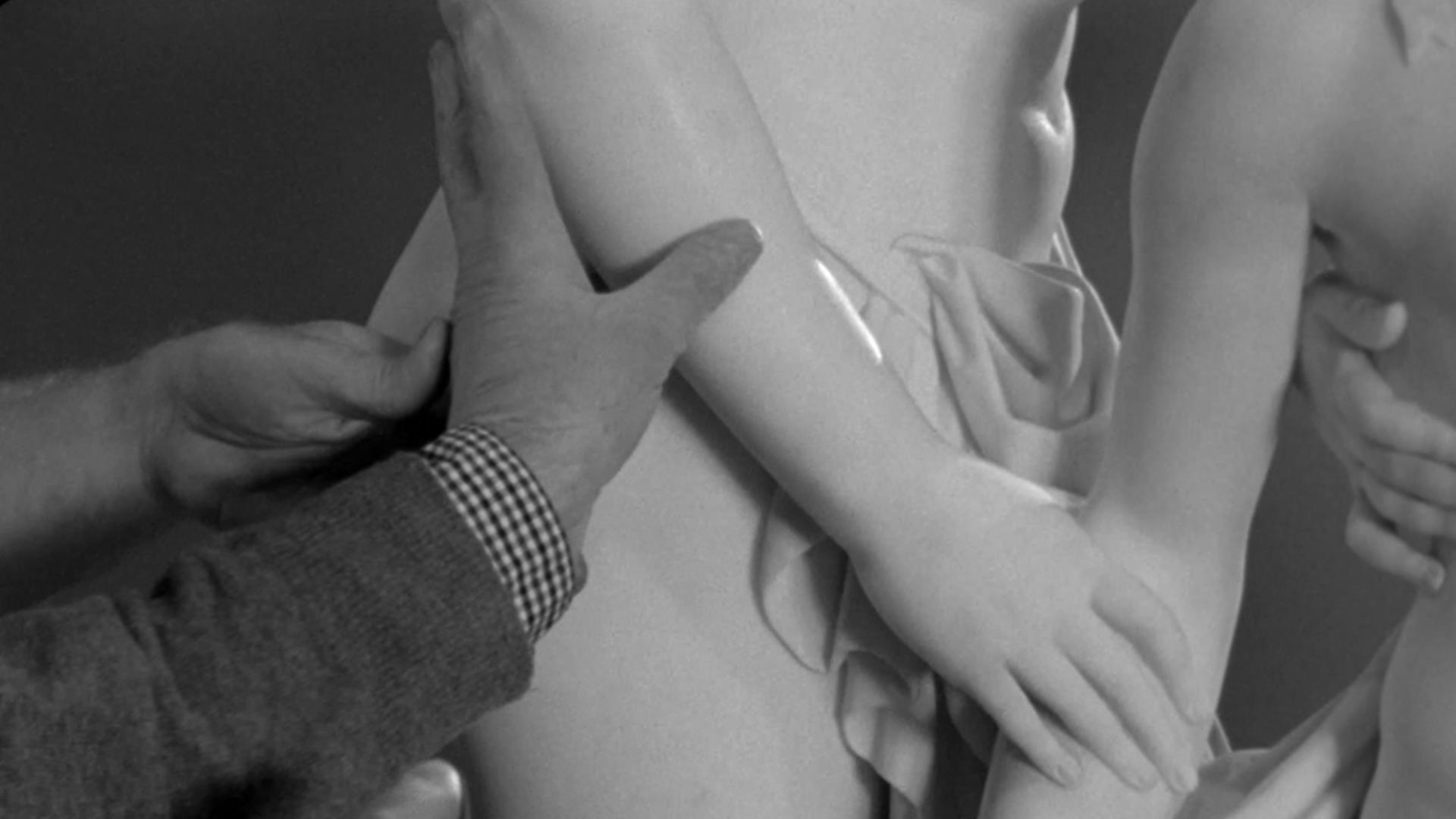This two-part program is composed of experimental moving images made by women; the time frame starts in the last century and ends now - or almost.
Why textures? Because we are watching as film grain, the tiny silver particles on celluloid, phase into pixels on our multiple screening devices. Our visual language changes as do our pleasures and an occasional regret. But handmade work can reveal hidden poetics and lead us to other pleasures.
Program 2: Escape Into Landscape
Who views the landscape and with what means?
Starting from your fingertips to feel the features of a sculpture, or using your eyes to explore light particles, scrutinize the stars, or gliding on oil platforms, how far can you go? How do we look into the past century to find an access to our future?
Followed by conversation with Vivian Ostrovsky and Sharon Balaban
Jessica Sarah RINLAND
Expression of the Sightless
2016 / 16mm / b/w / sound / 7' 02
A blind man’s inquisitive hands explore a Victorian sculpture.
Charlotte PRYCE
Prima Materia
2015 / 16mm / clr / silent / 3' 00
Delicate threads of energy spiral and transform themselves into mysterious microscopic cells of golden dust: these are the luminous particles of an alchemist’s dream. PRIMA MATERIA is inspired by the haunting wonderment of Lucretius’ De Rerum Natura. It is an homage to the first, tentative photographic records that revealed the extraordinary nature of phenomena lurking just beyond the edge of human vision.
Emily RICHARDSON
Petrolia
2005 / 16mm / clr / sound / 07' 50
PETROLIA takes its name from a redundant oil drilling platform in Cromarty Firth, Scotland. The film looks at the architecture of the oil industry along the Scottish coastline where oil and gas supplies are predicted to run dry in the next forty years. Shot on 16mm film, using time lapse and long exposure techniques, the film presents a record of industrial phenomena – the toxic beauty of the refinery at Grangemouth, huge drilling platforms gliding across the water as they come in for maintenance and repair at Nigg, and the last dance of the shipbuilding cranes in Glasgow harbor.
Benedict Drew created the soundtrack for the film using purely electronic, computer generated sound that works with the threshold between silence and noise just as the image works with that between the visible and the invisible.
Emily RICHARDSON
Redshift
2001 / 16mm / clr/ sound / 4' 00
In astronomical terminology 'redshift' is a term used in calculating the distance of stars from the earth, hence determining their age. REDSHIFT attempts to show the huge geometry of the night sky and gives an altered perspective of the landscape, using long exposures, fixed camera positions, long shots, and timelapse animation techniques to reveal aspects of the night that are invisible to the naked eye.
The film has a gentle intensity, and is composed of changes of light across the sea, sky, and mountains. It shows movement where there is apparent stillness, whether in the formation of weather patterns, movement of stars, the illumination of a building by passing car headlights, or boats darting back and forth across the sea’s horizon. The sound has been composed for the film by Benedict Drew, taking field recordings of the aurora borealis as a starting point, and using purely computer-generated sound to create a soundtrack that reflects the unheard elements present in the earth’s atmosphere.
Georgy BAGDASAROV & Alexandra MORALESOVÁ
Rhus Typhina
2014 / 16mm / / b/w / sound / 2' 44
“A film from one of labodoble's series of experiments with natural (organic) film developers. The structure of the film is based on the chemical formula of a developer based on Rhus typhina. The main protagonist of the film is a species of flowering plant of the Anacardiaceae family whose leaves and berries are mixed with tobacco and other herbs and smoked by Native American tribes. We tried to apply the properties of Rhus typhina in photochemistry. The film captures the research, experiments, harvesting, and preparation of the film developer in which the original negative was developed. The nonlinear structure of the chemical formula as well as the nonlinear research of the process are reflected in the order of the frames. No post-production except the sound. All editing work was made in camera before the chemical development". (Bagdasarov and Moralesová)
Rebecca BARON
The Idea of North
1995 / 16mm / B&W / sound / 14' 25
"In the guise of chronicling the final moments of three polar explorers marooned on an ice floe a century ago, Baron's film investigates the limitations of images and other forms of record as a means of knowing the past and the paradoxical interplay of film time, historical time, real time, and the fixed moment of the photograph. Marrying matter-of-fact voiceover and allusive sound fragments, evidence and illustration, in Baron’s words, 'meaning is set adrift.'"
(New York Film Festival, 1997)
Astrid de la Chapelle
Corps samples
2021 / 16mm & Video / clr +b/w / sound/ 14' 00
In 1924, a marine crinoid fossil is unearthed near the summit of Mount Everest, a famous British mountaineer disappears, and a Soviet leader dies. This simultaneity is the starting point of a narrative on the transformation of matter. In a vast movement, substances metamorphose, scales and temporalities overlap, and human bodies nestle in the depths of great terrestrial processes.
